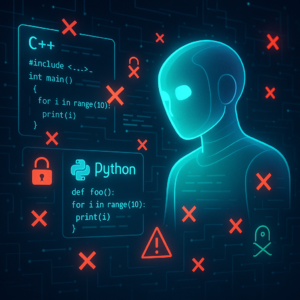Unlocking AI for Software Logging: How Language Models are Revolutionizing Log Parsing

Unlocking AI for Software Logging: How Language Models are Revolutionizing Log Parsing
Navigating the sea of data in our digital age can be daunting, especially when it involves the cryptic logs produced by software systems. These logs are like the secret diary of an application, recording everything from casual operations to serious hiccups. Leveraging this data requires a unique touch, especially when you’re aiming to catch and fix issues before they become full-blown nightmares. Enter the world of Large Language Models (LLMs) and their intriguing role in turning these logs into insightful, manageable information.
Why Logs Matter
Imagine you’re a detective at a crime scene, and the logs are your clues. They hold the key to understanding what happened, when, and perhaps even why. For software developers and operators, these logs offer invaluable insights into the performance and health of their systems, providing a foundation for fault detection, diagnosis, and recovery.
But here’s the catch: logs are unstructured. They’re a mishmash of text and dynamic variables, a giant riddle waiting to be solved. Parsing these logs—turning them into neat, structured templates—is the first step toward making sense of them. Traditionally, this has involved syntax-based parsing, relying on set rules and domain knowledge, but this approach stumbles when logs don’t fit the classic mold.
The Rise of Language Models
Enter semantic-based log parsing techniques, which tap into the power of deep learning. These approaches have made strides in understanding the semantics within log messages but have struggled with larger and varied datasets. This is where LLMs, particularly models like ChatGPT, are leading a quiet revolution.
The leap to using LLMs for log parsing was natural—after all, logs resemble natural language. In recent studies, these AI models have demonstrated the ability to parse logs more accurately, with many researchers betting on ChatGPT as their model of choice. However, until recently, there’s been a lack of comprehensive benchmarking to explore how different LLMs perform in this task.
Diving Into the Research
A study analyzed the capabilities of six LLMs, including well-known ones like GPT-3.5 and Claude 2.1 and lesser-known, free-to-use counterparts like CodeLlama and CodeUp. These models were tested on a trove of log data from various open-source projects, each offering unique challenges.
The goal was to assess which LLMs excelled at log parsing and to see if free alternatives could hold their own against their proprietary, paid counterparts. The testing involved parsing accuracy, as well as metrics like Edit Distance (ED) and Longest Common Subsequence (LCS), which gauge how closely the parsed templates matched the actual log messages.
Findings That Matter
Parsing Accuracy
In the quest to determine which LLM comes out on top, CodeLlama made a bold claim for leadership. It emerged as the best performer across several metrics, effectively parsing templates from a majority of the log messages. Interestingly, the study found that providing models with context through few-shot prompting generally improved performance, especially for five of the six models.
Edit Distance and Longest Common Subsequence
When evaluating metrics like Edit Distance, CodeLlama continued to shine. It reported the lowest error rate, indicating highly accurate parsing. Meanwhile, for LCS, which emphasizes consistency in parsing messages with shared templates, GPT-3.5 and Claude 2.1 performed exceptionally well.
Paid vs. Free LLMs
Here’s where it gets exciting: Free models like CodeLlama were sometimes able to outperform paid models like GPT-3.5 when it came to parsing accuracy and Edit Distance. This means that with the right resources, free models can be a viable option for log parsing. The hardware demands of such models are the primary challenge, but modern GPUs can offer a high-performance solution without additional costs.
Usability and Real-World Implications
The usability of LLM-generated outputs is crucial. The study discovered that, despite clear instruction, models often varied in their placeholder formats. This inconsistency can add manual processing burdens but also highlights an opportunity for refining model training and prompting strategies to produce cleaner, more usable outputs.
Practically speaking, these findings are monumental for developers and businesses relying on software systems. Using LLMs, particularly free-to-use options like CodeLlama, offers a cost-efficient, accurate way to monitor and manage system health, reducing downtime and improving reliability.
Key Takeaways
- Logs are Like Diaries: They provide essential insights into software operations, but parsing them into structured formats is vital for analysis.
- Beyond Syntax: While traditional syntax-based parsing struggles with varied data, LLMs present a promising alternative by understanding the language of logs.
- Battle of the Models: CodeLlama outshines in parsing accuracy and Edit Distance, often outperforming even premium models like GPT-3.5.
- Free Models Shine: Free-to-use models can successfully handle log parsing if you have the hardware to support them, posing a frugal alternative to paid APIs.
- Output Consistency Matters: Models vary in placeholder selection, signaling a need for more precise training or formatting guidelines.
- Metrics Matter: Choosing between Edit Distance and Longest Common Subsequence should depend on the specific needs of your task—each offers unique insights.
By tapping into the potential of LLMs for log parsing, you can boost your software system analysis without stretching your budget. Whether you’re a startup or an established enterprise, exploring these AI-driven tools can make unstructured logs a reliable ally in your development and maintenance arsenal.
If you are looking to improve your prompting skills and haven’t already, check out our free Advanced Prompt Engineering course.
This blog post is based on the research article “A Comparative Study on Large Language Models for Log Parsing” by Authors: Merve Astekin, Max Hort, Leon Moonen. You can find the original article here.




